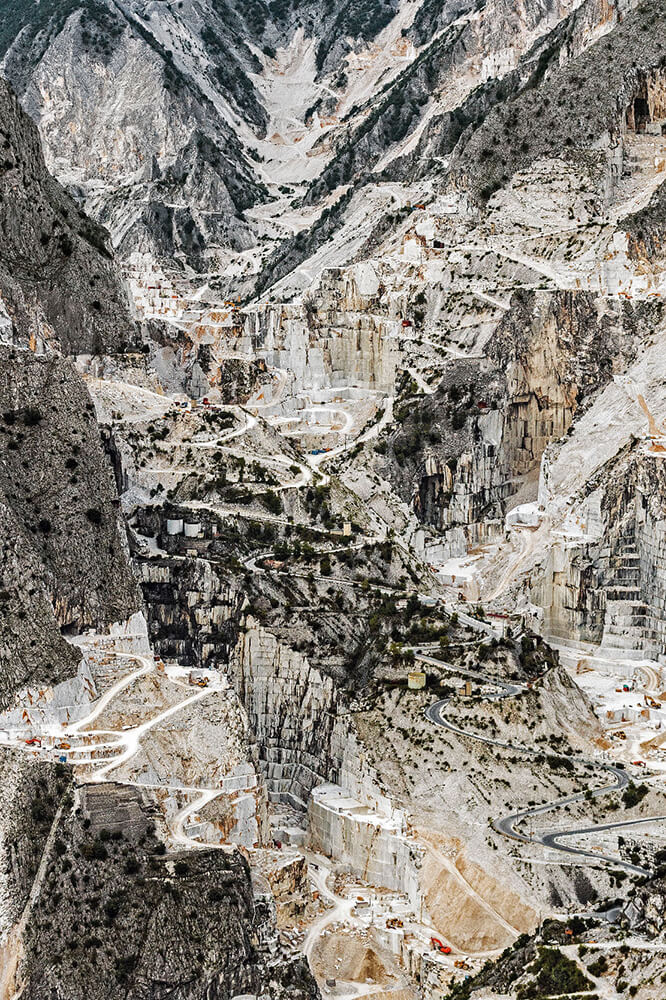“PLANET
EARTH”
ANNOUNCING THE WINNERS
We’re delighted to present the results of our July 2023 competition judged by celebrated Nat Geo photojournalist Ami Vitale.
“Heaven is under our feet as well as over our heads.” – Henry David Thoreau
What comes to mind when you think of Planet Earth? Is it the vast stretches of wilderness, the intricate ecosystems that breathe life into our existence, or perhaps the sad damage that humankind wreaks on it? This month we asked you for images of our shared planet – its landscapes and our influence on them.
Here we see 20 stunning images from as many talented photographers that both celebrate Earth’s splendour, and recognize the indelible mark humanity leaves on it. From untouched snow-covered jungle to pristine rolling sand dunes, via endless blue ocean, we are confronted by the breathtaking beauty of a planet too vast and varied to ever know in full. And yet colossal open-pit mines, towering concrete barriers and raging forest fires remind us of the pressures we exert in our unfettered quest for human progress – the latter more relevant than ever as heat waves sweep across swathes of Europe, Asia and the US. These images act as both a source of awe and a call to action. Heaven is under our feet and it’s worth protecting.
Congratulations to the selected photographers, and thank you to everyone who submitted. You can join the discussion on Facebook and Instagram.
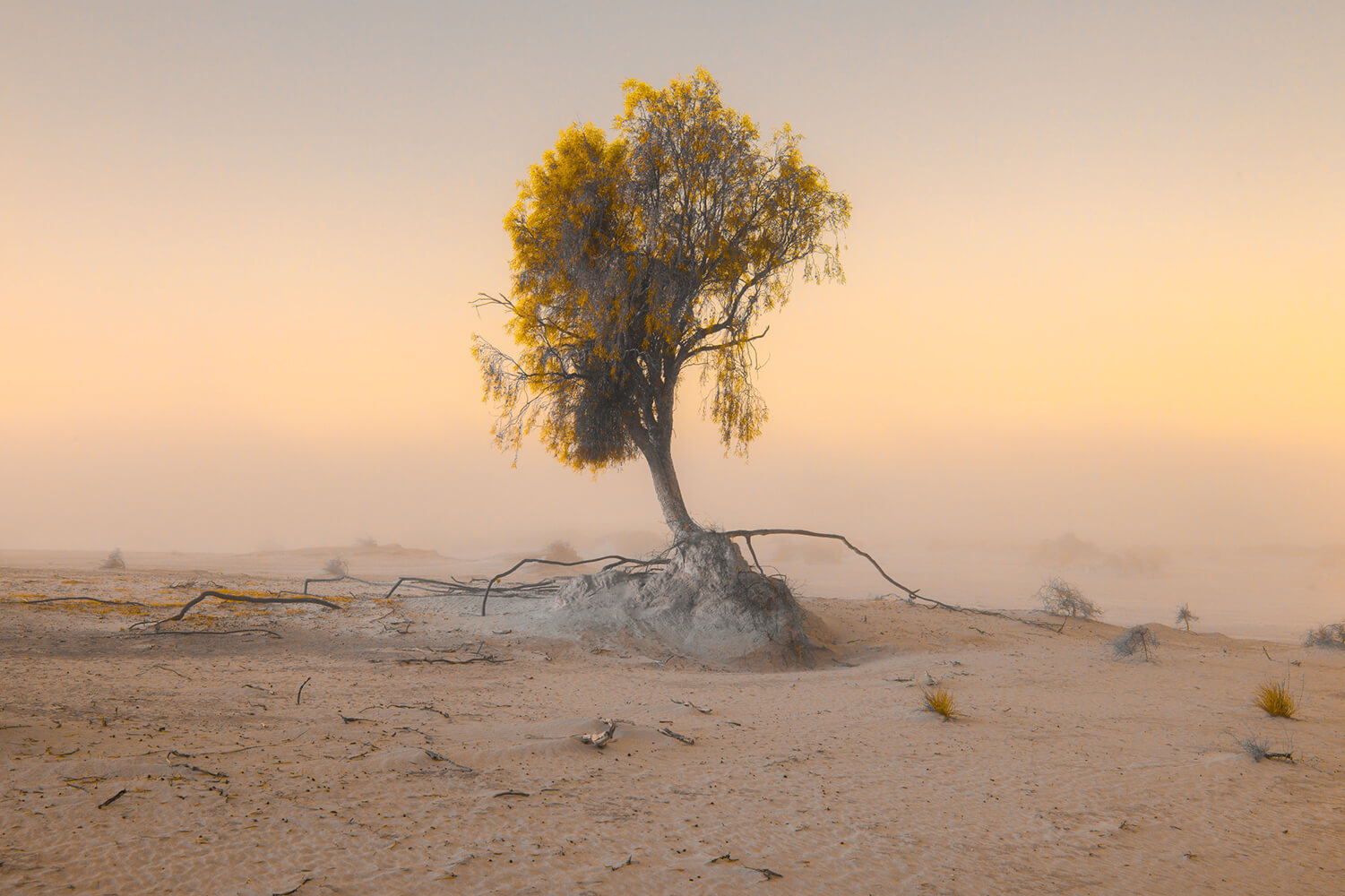
1ST PRIZE: RUSSELL CURR
This image of a tree thriving in a drought-stricken landscape of Australia symbolizes resilience and serves as a powerful reminder of the natural world’s ability to adapt and survive even in the face of adversity. The juxtaposition of a tenacious tree against a dry, barren background is a poignant reminder of the resilience of the natural world. It speaks to the innate ability of life to adapt and endure, even in the face of seemingly insurmountable challenges. – AMI VITALE
The tree stands like a lone soldier on the battlefield at dawn, each moment an effort of survival. The exposed tree roots stand out in contrast to the softly lit, misty background as the dusty terrain offers little but sand and dirt. An image that depicts the magnificent ability of the life that occupies these harsh landscapes, seeking all means of existence. An illuminating photograph in many aspects. – LIFE FRAMER
Photographer statement – Lake Mungo National Park, Australia. Deserts are harsh places for both fauna and flora. These low rainfall areas produce resilient plants, especially so the trees. The very aloneness of these trees speaks to the difficulties of survival.
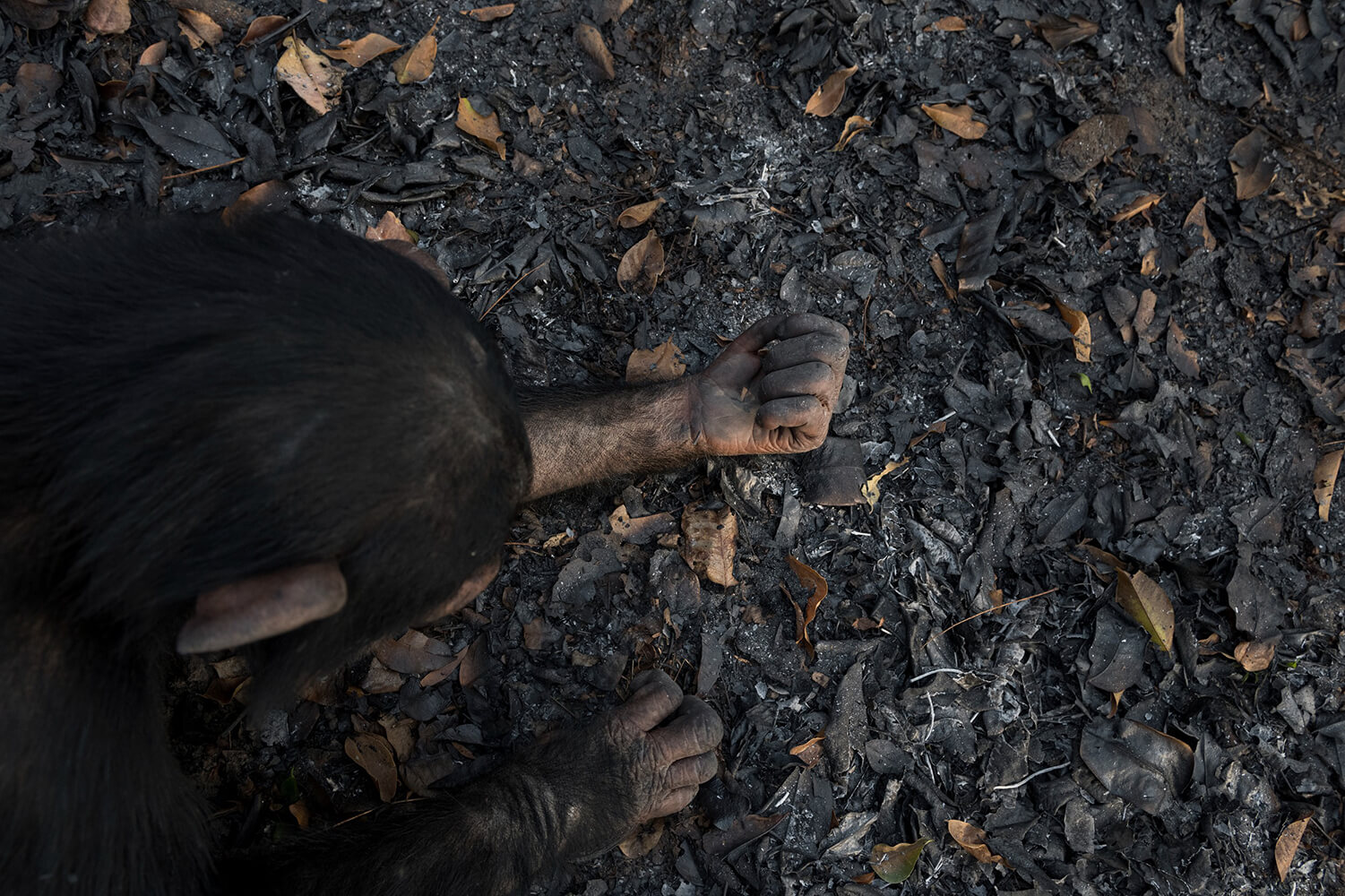
2ND PRIZE: GUILLAUME PETERMANN
This emotional and powerful image captures the resilience of a western chimpanzee amidst the aftermath of a bushfire. The scorched earth and charred vegetation serve as a stark reminder of the challenges faced by wildlife in the face of environmental disasters. – AMI VITALE
Pain and devastation bleed from each corner of this arresting scene. It’s easy for the viewer to initially mistake the Chimpanzee’s hands for human ones, but as the realization sets in, feelings of regret and despair dominate. The photographer is quick to state that this destruction is happening to our ‘shared home’, the Earth we inhabit along with many other species, yet it is only the human species that is causing this global heating crisis. A powerful and poignant photograph of reality. – LIFE FRAMER
Photographer statement – Our shared home is burning! The arm of this western chimpanzee on bushfire-scarred ground reflects the environmental changes and loss of biodiversity that we are causing to our planet today. In West Africa, population growth is accompanied by the expansion of bush farming. As a result, more and more forests are going up in smoke, soils are becoming increasingly infertile due to the use of pesticides, and the West African chimpanzee, already a critically endangered species, is under increasing threat. Yet chimpanzees are vital to the well-being of the forests and, by extension, to the local people who, in addition to farming, depend on forest resources for their livelihoods. Chimpanzees spread fruit, plant seeds and prune trees, maintaining and helping the forest to regenerate. Every breath we take depends on another life, another species. When we damage the earth, we damage our own shared home!
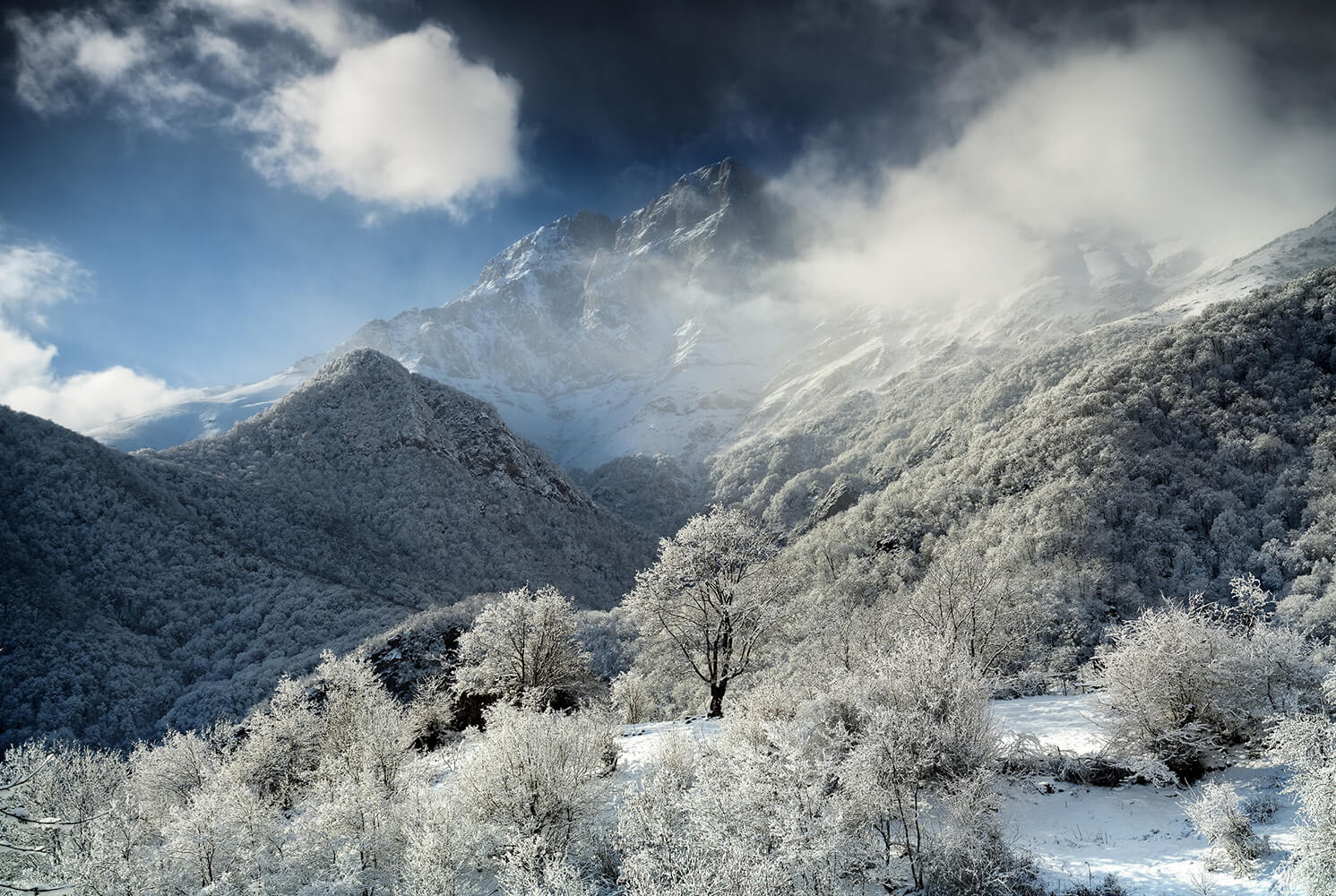
HAYK BARSEGHYAN
The image seems like a curious juxtaposition as a winterscape jungle-like setting appears where dry, arid scenes would normally greet a visitor. There is a pristineness to the scene of frost-tipped branches and white mountains. The photographer truly celebrates this part of the world, one maybe not as renowned for its cold mountain aesthetic, and captures detail from the land to the sky, the background to foreground. The best landscape shots ‘wow’ the viewer with their majesty, and this does exactly that. – LIFE FRAMER
Photographer statement – Winter in the Jungle. Immerse yourself in the enchanting winter scenery of the Armenian South Highlands with this mesmerizing photo. Nestled within the snowy landscape, a dense jungle-like forest emerges, creating a striking contrast against the rugged mountains that dominate the foreground.
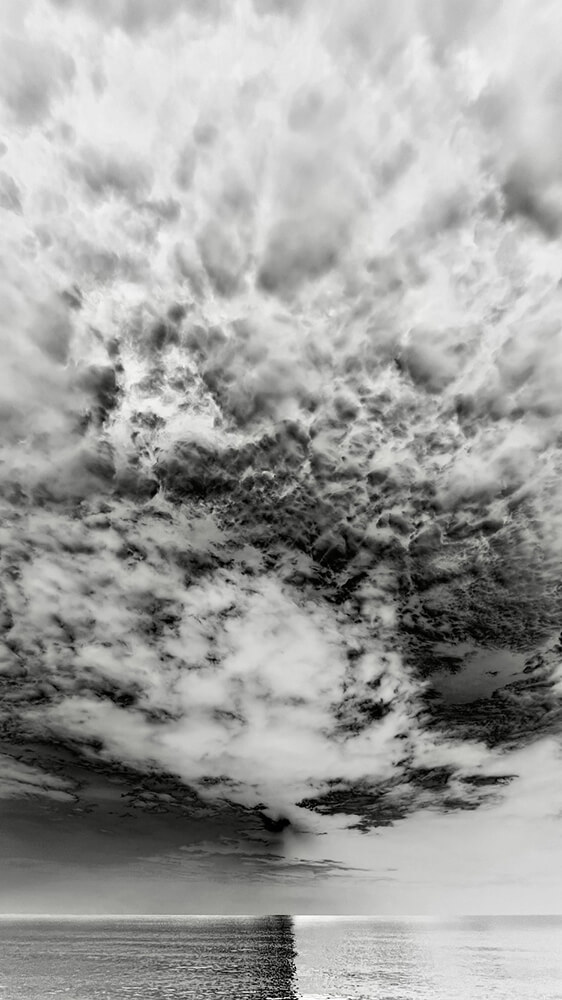
KRIS SIRIWANGCHAI
An image of immense energy, almost reminiscent of an explosion, leaving the viewer to question the perfectly shadowed sea and the tremendous cloudscape. Through this pattern of fractured clouds the photographer seeks out and frames the astonishing art that nature can create. The black and white aspect allows the photograph to be elevated beyond a traditional capture of the horizon. – LIFE FRAMER
Photographer statement – Bifurcated Light, Hua Hin, Thailand.
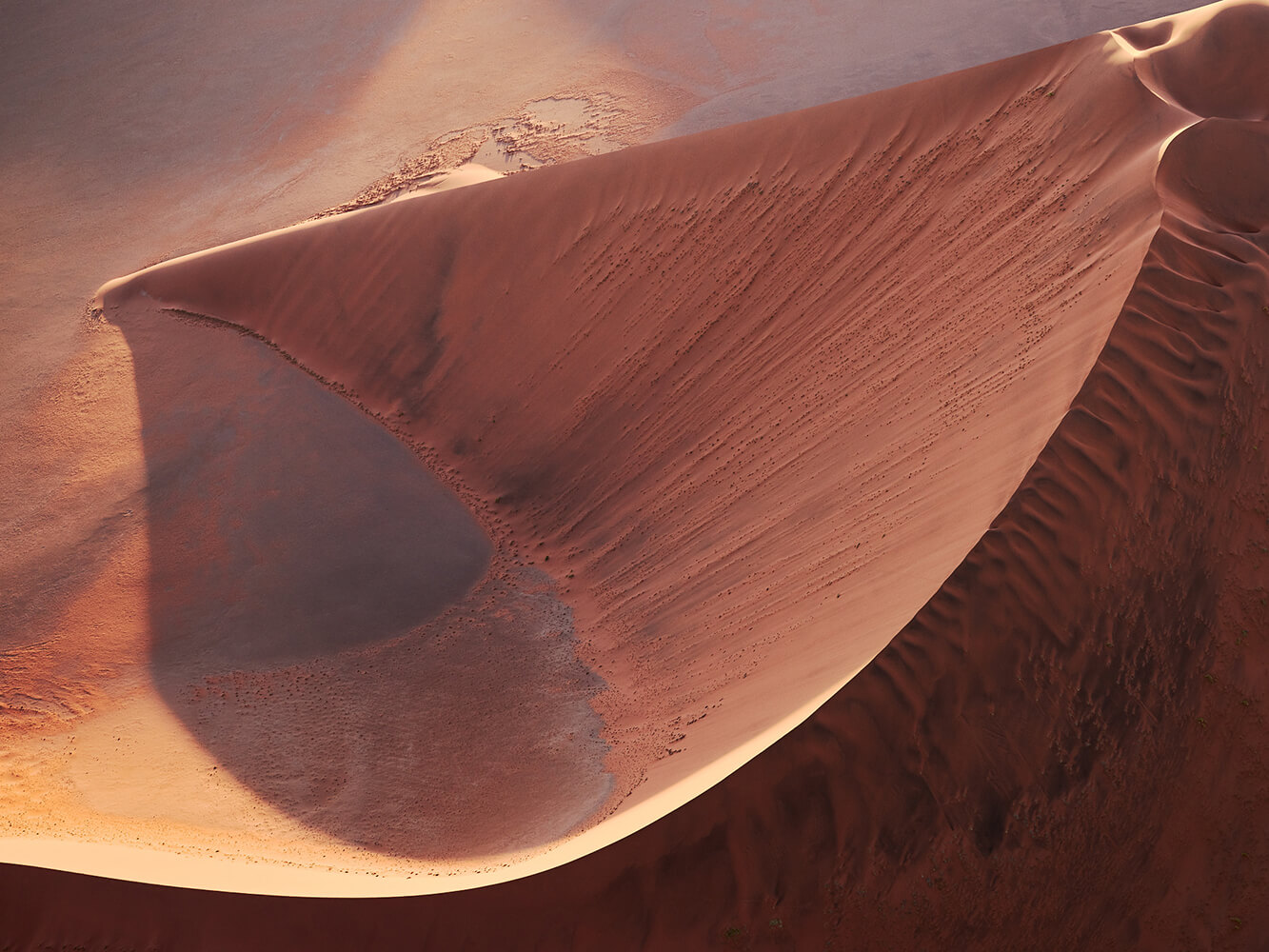
BROOKE HOLM
An astonishing otherworldly scene welcomes the viewer as shape and shadow momentarily skew perspective. This viewpoint of the earth’s natural formations is not always observed or accessible to people, but the photographer documents this magnificent scene from above, bringing it to the forefront for the viewer to admire – with their feet placed firmly on the ground. A reminder of how much more of this world there is to explore and appreciate. – LIFE FRAMER
Photographer statement – My work observes the celestial and anatomical body of the Earth through large-scale photography. Creating detailed environmental portraits of its elemental features, I focus on the physical body of the Earth, often treated by humankind as we treat any body, with opposing practices of reverence and exploitation.
It is often the intimate details of landscapes that capture my attention, revealed first through the lens of satellites, then through my camera lens in a small aircraft. It is the textures, colors, shapes and patterns of landforms and earthly elements colliding and weaving amongst each other. It is the perplexing abstract visuals of the interplay between worlds. At these heights, the point of view of the observer is a non-human one. By disrupting the scale at which we typically consume the natural world, we are removed from our conventional way of seeing and introduced to something unfamiliar. From here, we can see that everything is connected.
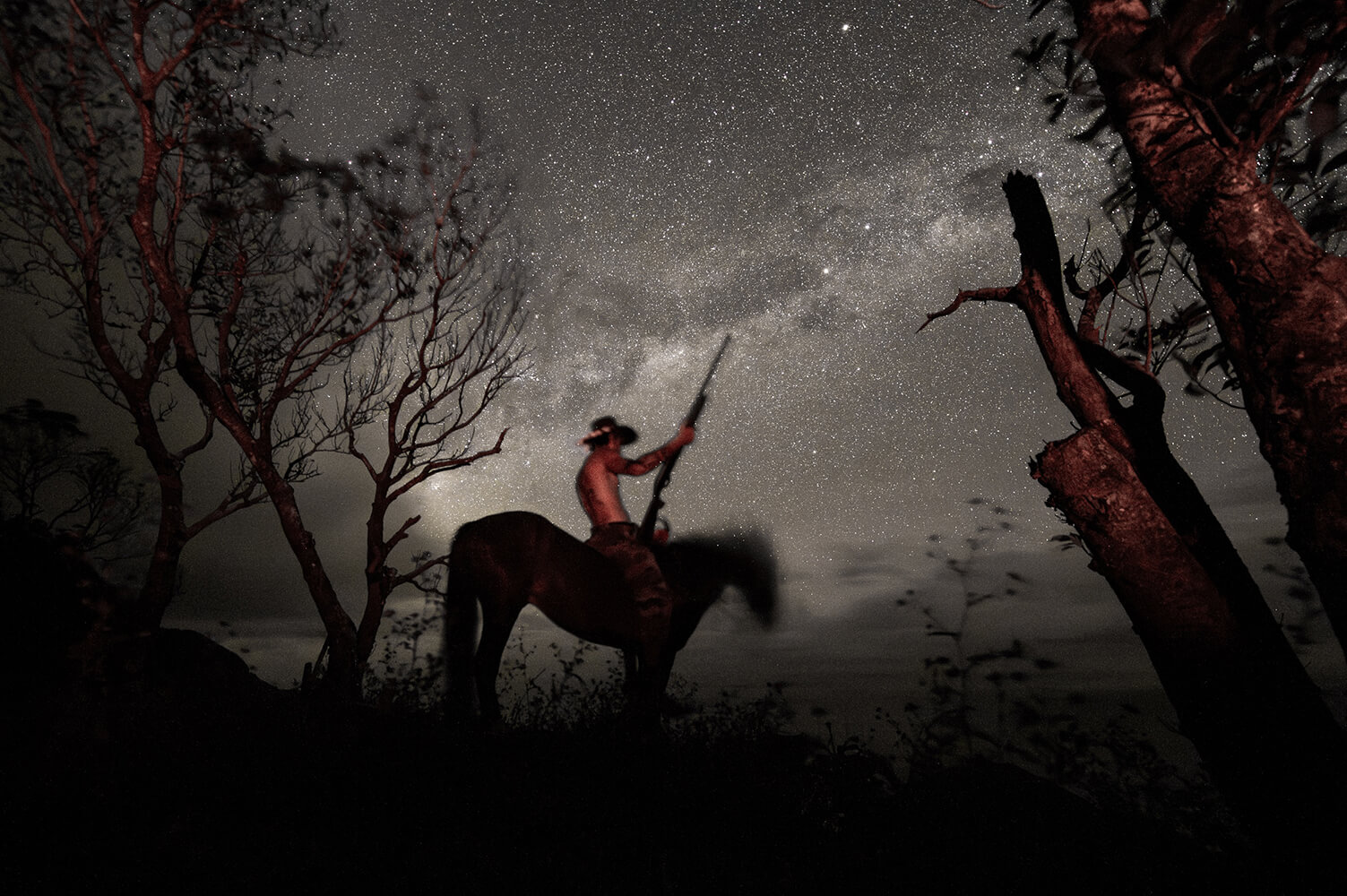
JULIEN GIRARDOT
Ghostly figures appear before the viewer as if painting and photography merge to depict this extraordinary scene of task and tradition. The photographer’s choice of a low angle gives the subjects prominence in their actions, and allows full scope of the river of stars flowing above the lone cowboy and his dutiful companion. A remarkable image, where skill and creativity are in perfect sync to highlight this isolated culture and its diminishing way of life. – LIFE FRAMER
Photographer statement – Marquesas, in French Polynesia is the furthest inhabited archipelago from a continent. Derived from that of the cowboys, a unique equestrian culture, inherited from colonial times has developed in the Marquesas Islands, French Polynesia, and in particular on the island of Ua Huka, nicknamed The Horse Island. Vohi Brown, is one of the last few proud horsemen to live with horses. Horse ridding have slowly but surely been replaced by gleaming Japanese pick-up trucks even on those “end of the world islands”. On this photo, Vohi is on a horse back night hunt for wild pig, a way to sustain his family with fresh food and to maintain a close connection with the wild.
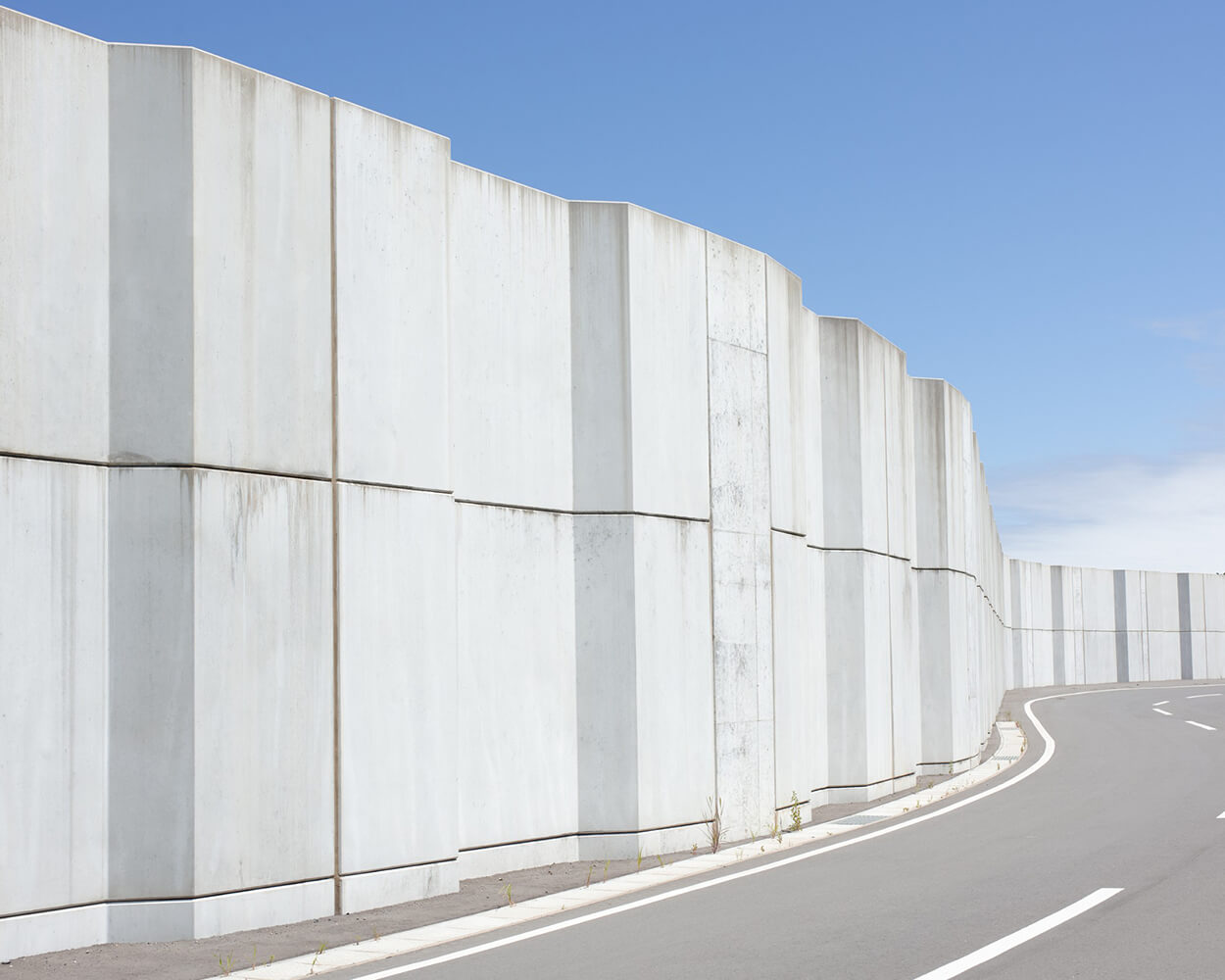
PENGKUEI BEN HUANG
This thoughtfully constructed image is aesthetically pleasing in both form and tone as it complements shape with perspective. The scene undoubtedly leaves the viewer to ponder the view beyond the concrete structure, as if observing a seascape without the sea. A fascinating and acute documentation of our basic human response to threat, uncertainty and the power of nature: building a wall. – LIFE FRAMER
Photographer statement – Coastal Mammoth is a photographic documentation of the newly erected seawall in the northeastern part of Japan, known as the Tohoku region, a decade after the Great East Japan Earthquake and Tsunami in 2011. Ben has been visiting the Tohoku region since 2012 to document the gradual recovery of devastated towns. He took an interest in the infrastructural recovery in 2019 at its height and subsequently focused on the construction of seawalls and dykes, upon learning the scope of the civil project.
The Japanese government launched several reconstruction projects to rebuild the region devastated by the disaster in the aftermath of the 2011 Great East Japan Earthquake And Tsunami. Part of the plan includes reconstructing seawalls along the north-eastern coast, with a budget of $12 billion. Upon completion, an average of 14 meters of concrete barriers would be erected along the 400km coast, effectively altering the landscape.
The construction has been controversial. While experts and many coastal residents agree that newly erected barriers would minimize the damage of future tsunamis, opponents worried that it would give people a false sense of security and alter the region’s cultural identity. But the structure poses another question: Is it the trend of the future shoreline beyond Japan as we face the threat of rising sea levels? How will our relationship with the sea, physically and psychologically, be affected should these structures become integral parts of our lives?

RANI SANDERSON
The photographer’s words, written in present tense, amplify the urgency of this scene, pulling the viewer in with detail and perspective. The little girl’s apparent disinterest in the burning horizon is an alarming sign of how common these disastrous sights have become – as if a reflection of the general public’s reaction of indifference to the climate crisis, as the photographer rightly muses. Due to global heating, these wildfires are now dangerously more common worldwide, and countries that would never have normally experienced these infernos are now firefighting – literally, figuratively and politically – on an annual basis. This arresting photograph comes with a stark warning. – LIFE FRAMER
Photographer statement – Road to York, July 29 2023. A photo of my daughter in front of the “York Fire ” in the Mojave National Preserve.
Sadly this fire is over 30k acres currently and it’s destroying Joshua trees. It’s smoke is casting a shadow on Las Vegas about 60 miles away. We have an overgrowth of invasive grasses in the desert as a result of an unusually high rainfall year. We are also going through a historical heatwave throughout the US contributing to our fires. It was 112 when I took this photo. I was able to take about 10 pics before my iPhone turned off due to extreme temperatures. There’s something about the shot… the way my daughter isn’t looking… it captures a certain kind of emotion of the planet crying and no one paying attention. This fire likely won’t make the news. I posted this with a Native American proverb -“we do not inherit the earth from out ancestors, we borrow it from our children.”
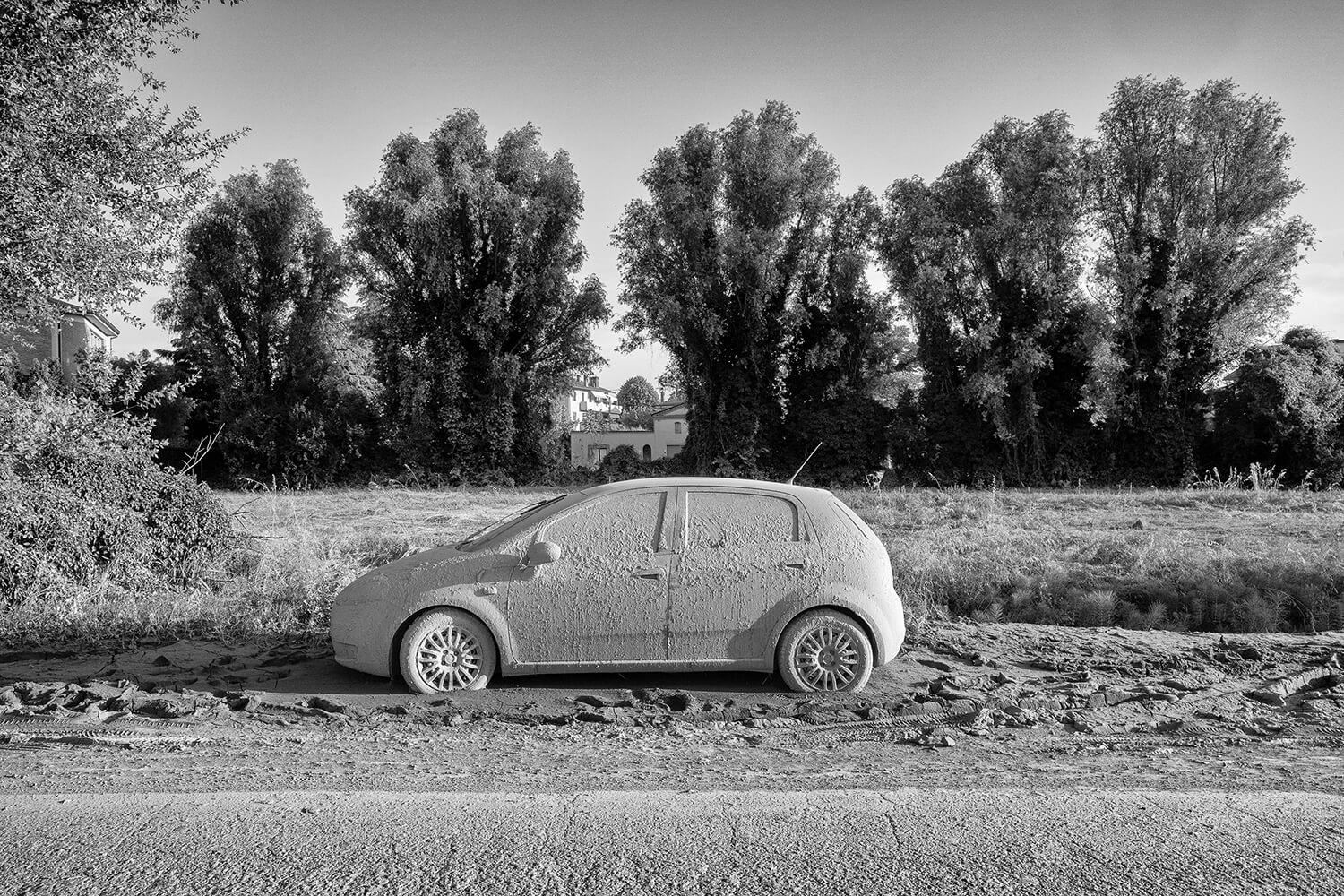
ANDREA BERNABINI
Initially an unremarkable setting of suburban life, the viewer is only left questioning the thin veil of ominous mud that covers each surface. The photographer has thoughtfully chosen to share this scene in a subtle grayscale, an image less familiar than the murky browns of flooding in mid-destruction. A considered image of the aftermath, and the reality of the fallout from the climate crisis. – LIFE FRAMER
Photographer statement – “Nothing and no one is the same as it was a moment before”. Flood in Italy 19 may 2023. Italy is universally considered the jewel of the planet Earth both from an artistic and landscape point of view. In this seemingly paradisiacal context there is a region, Romagna, located in the centre/north of the Italian peninsula, which was overwhelmed by a terrible flood last May. The mass of water without containment has upset the territory, the cities and its inhabitants. Sure that natural disasters were something else, the population of these areas has instead come into contact with the meaning of destruction. The mud has submerged the fields, the farms but also the houses, the infrastructures, the monuments, the churches, the libraries. Suddenly the protected and comfortable life of this rich area of Italy was faced with the effects of climate change; the extraordinary upheavals that resulted from it did not only act on the territory and the morphology of the landscape, the mutation was also a metamorphosis for human beings. Everything changed. Territories that felt safe were confronted with the awareness that natural forces can take over everything if they are not given due consideration and treated with due caution.
Around me mountains of lost memories, the most intimate, extirpated from homes. The contradictory emotions of people who have lost everything and my inner pain, not one thing was in its place anymore, the physical and emotional chaos took over, in that moment nothing was more understandable, everything was unexpected. The houses, the things, the nature, the small details, all the known imagery had become unrecognizable. The tangible had changed, modified, disappeared, this alteration of the aesthetics also generated an emotional chaos in me that prompted me to work on myself for a recomposition of feelings. My quest was to be able to describe this drama through a composed gaze. Transferring its drama through the voice of the natural elements, the scars of the natural trenches left by that mud that covered everything, nature, colors, memories, elements erased by this gray patina, which takes away the color of life that has been completely cancelled.
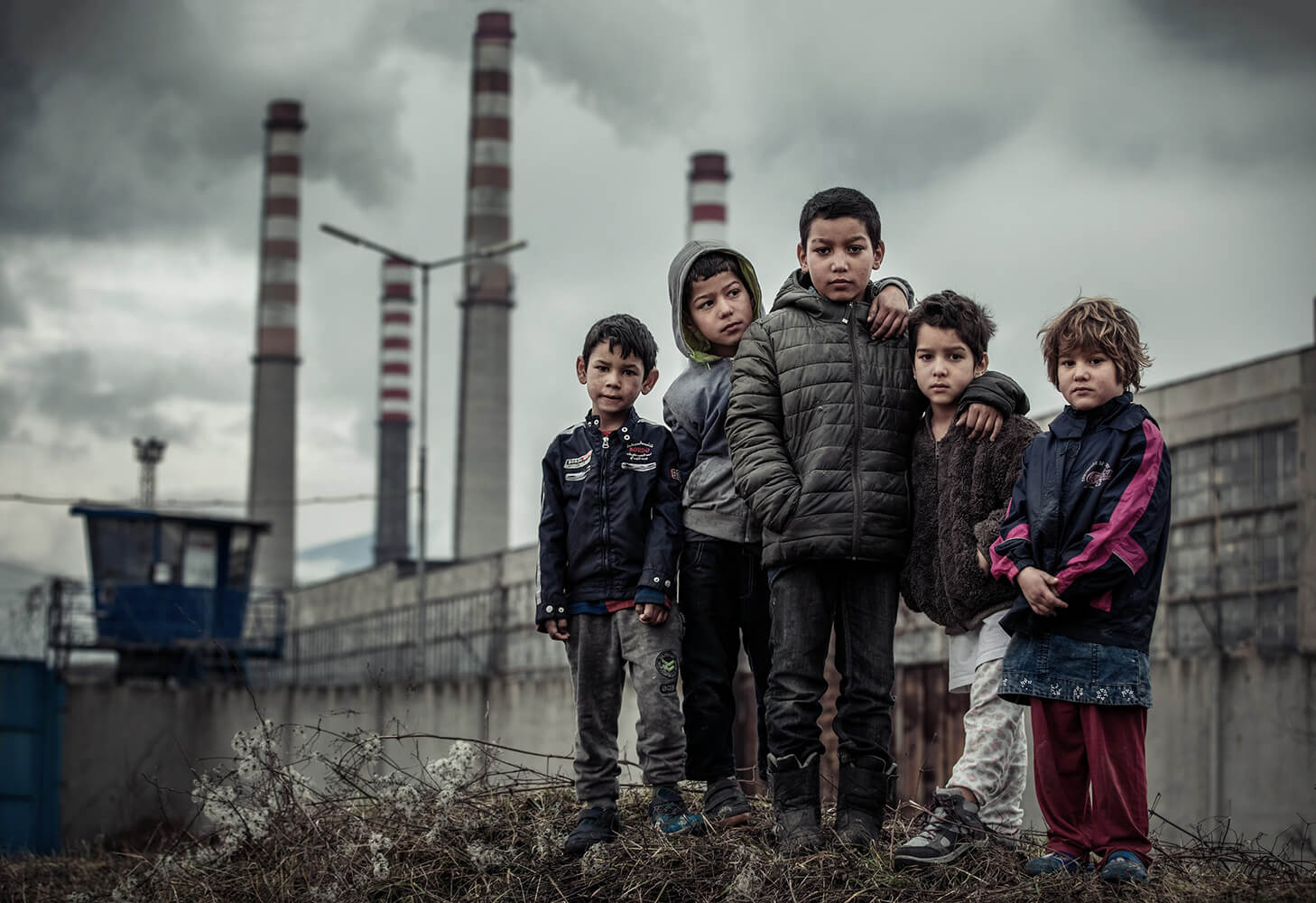
VLADIMIR KARAMAZOV
The photographer has carefully composed this image to depict humanity in many forms, including youth, industry and environment. Beneath the children’s feet are trampled, wilting shrubs – presumably vibrant in the right conditions but here they wither and decay – and the dreary grey sky anchors the somber tone, adding a feeling of hopelessness to the scene. The towering chimneys (echoing the stance of the children) and high, industrial fencing are a reminder of decisions made by previous generations – decisions without consideration for the health of our planet or the future of following generations. – LIFE FRAMER
Photographer statement – Muddy childhood.
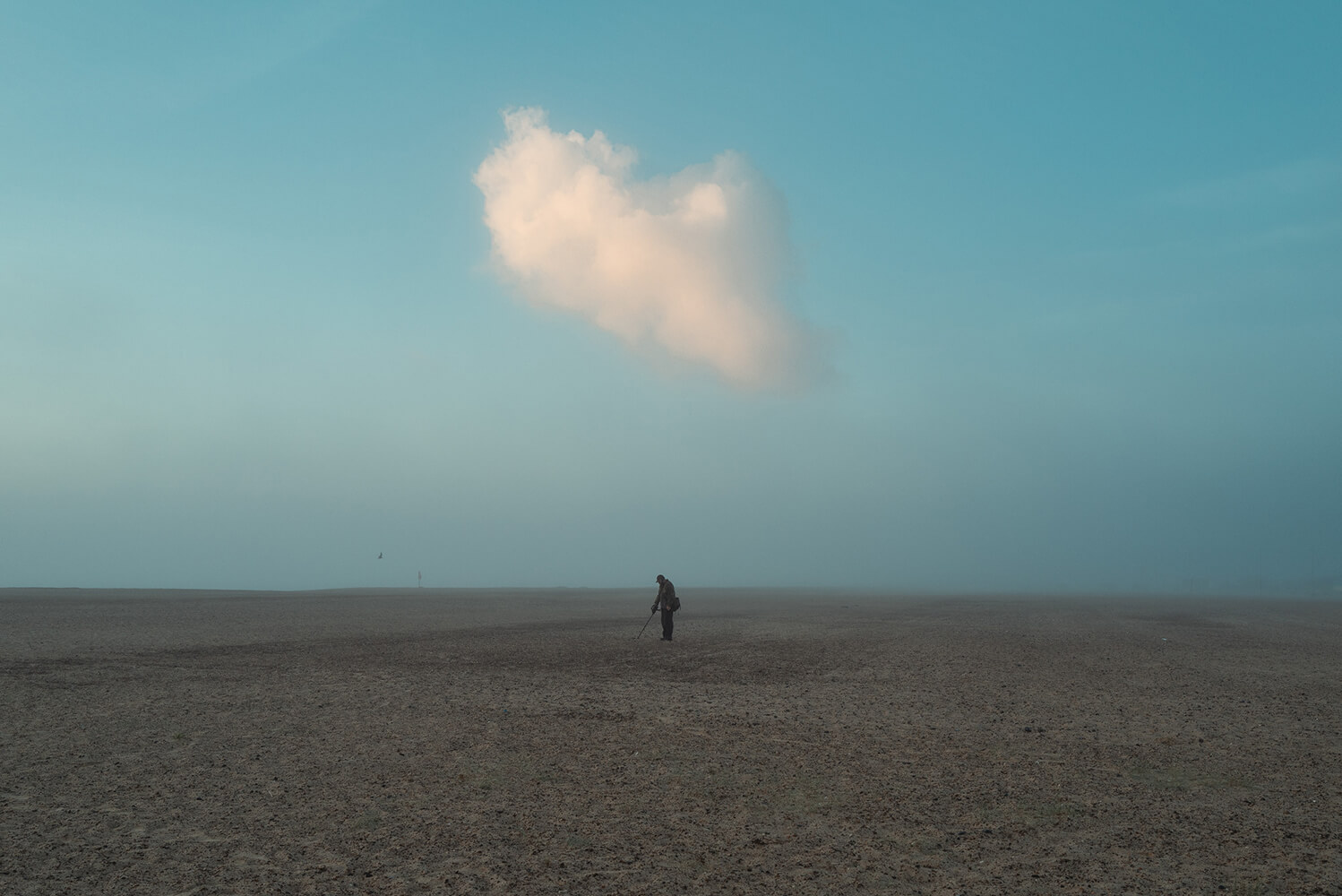
TOMMASO CARRARA
A quiet scene of cinematic beauty welcomes the viewer. A lone cloud floats above the subject like a distorted heart, curiously following their movements across the barren landscape. The viewer’s thoughts and questions flow in and out of focus as they contemplate the act of retrieving objects left in the earth by previous generations. This subtly animated moment feels surreal yet organic. – LIFE FRAMER
Photographer statement – Great Yarmouth, 2022.
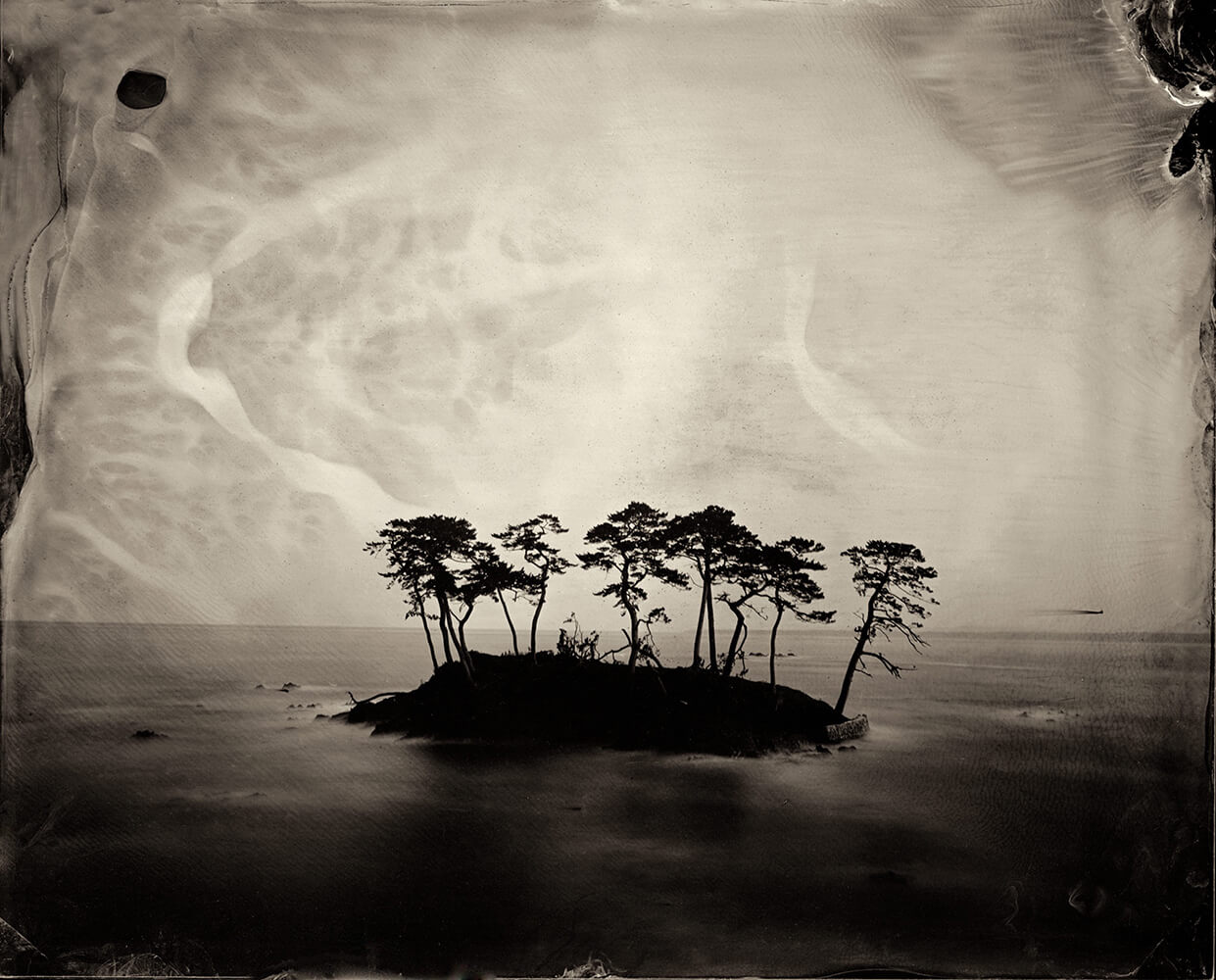
EVERETT KENNEDY BROWN
The photographer marries this old analog process with an ancient landscape to create a ghostly scene. Even though the photograph is devoid of color it is still full of beauty and awe. Creating the image in this form allows the viewer to remove the exactness of the landscape and appreciate its symbology to Japan as well as its organic origin and purpose to the planet. – LIFE FRAMER
Photographer statement – From a project in Japan to record the ancient landscapes of the country. I’m using the wet plate process to inspire a sense of awe and more acute awareness of the many wonders of our planet earth.
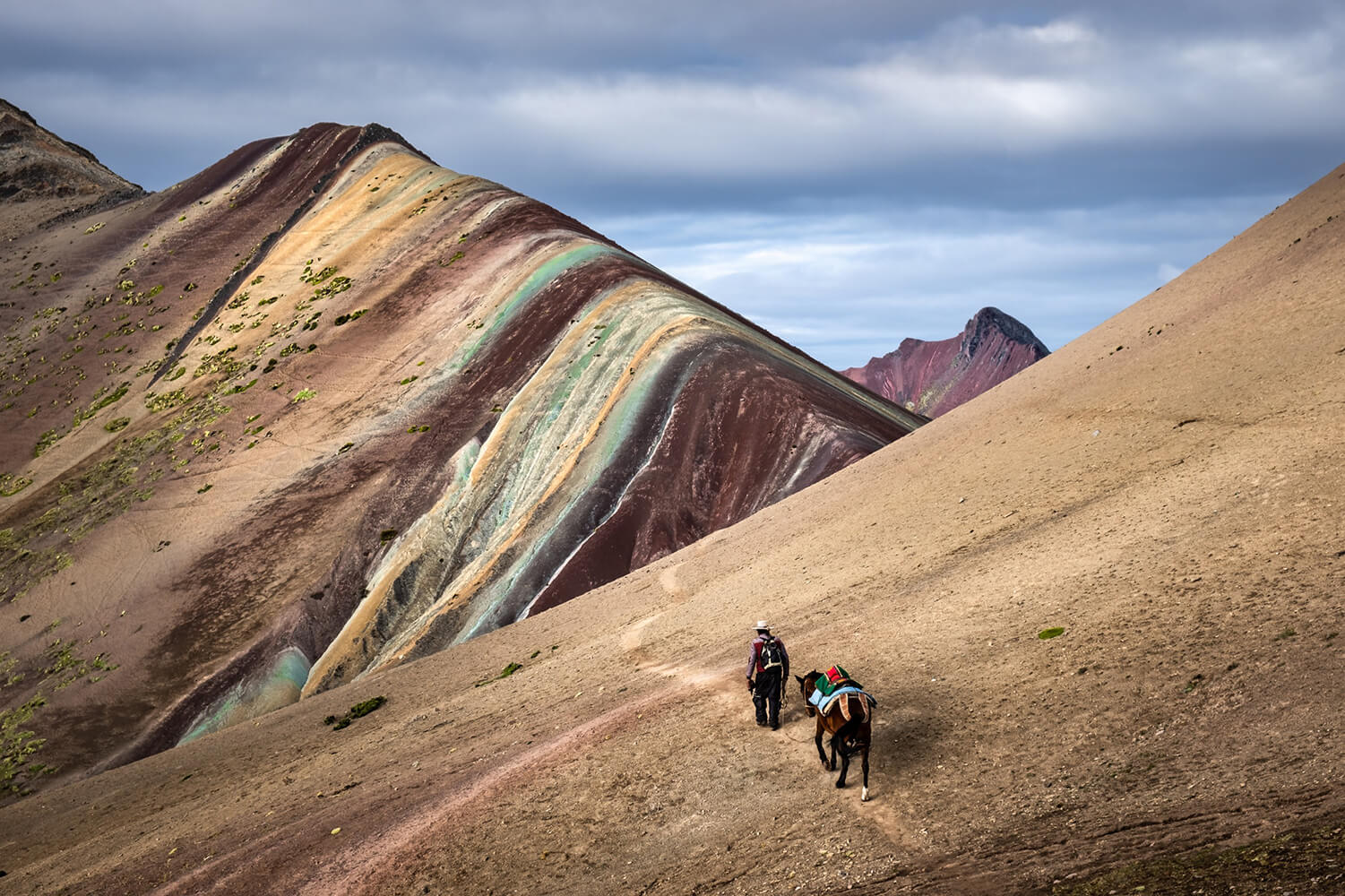
NICOLAS CASTERMANS
There is a subtlety to this scene of natural wonder – most of the images online of ‘Rainbow Mountain’ suffer from over-saturation, however here the photographer chooses to give the earthy tones dominance and allow the spectrum of color from the mountain to naturally radiate and reflect in the daylight. In the foreground the viewer acknowledges the horseman, walking unassumingly towards the mountain pass as the exposed layers of the minerals within momentarily echo his horse’s coat of colors. – LIFE FRAMER
Photographer statement – Rainbow Mountain. A local Quechua horse rider walks towards an amazing 5,000-meter mountain pass in the Peruvian Andes, Cusco region.
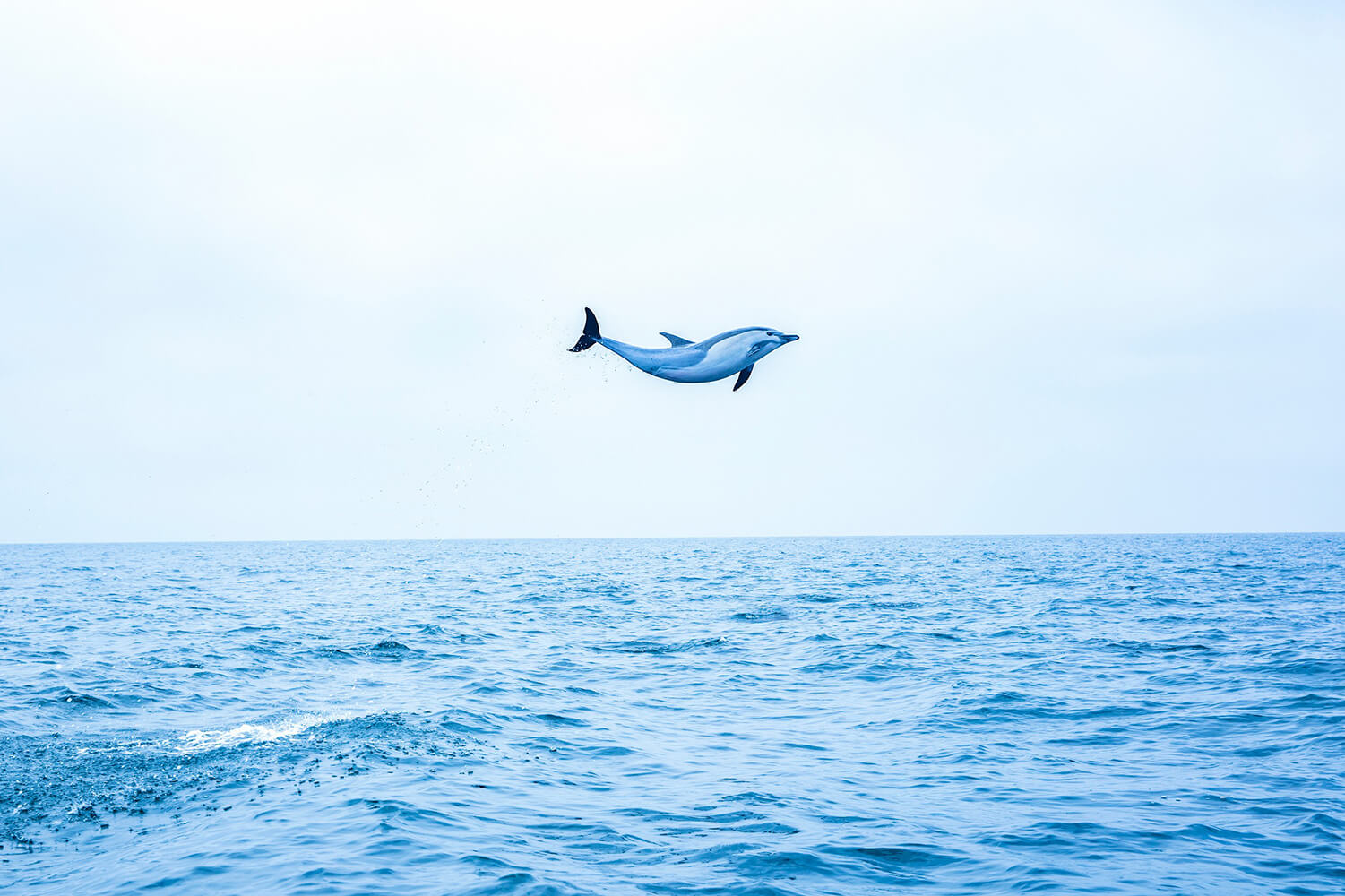
WOODS WHEATCROFT
The photographer captures a scene of raw power with a hint of surrealism – the solo dolphin captured at the apex of its leap seems as comfortable as it would be when beneath the surface of the water. The simplicity of the scene allows the brilliance of this animal to take centre stage, the pale blue tones giving the surrounding environment its rightful characteristics. A breathtaking scene of this creature in all its mystical glory. – LIFE FRAMER
Photographer statement – I am attracted to uniqueness and unique perspectives when it comes to “raw natural planet earth” type imagery. Pacific white sided dolphin off coast of San Diego, California.
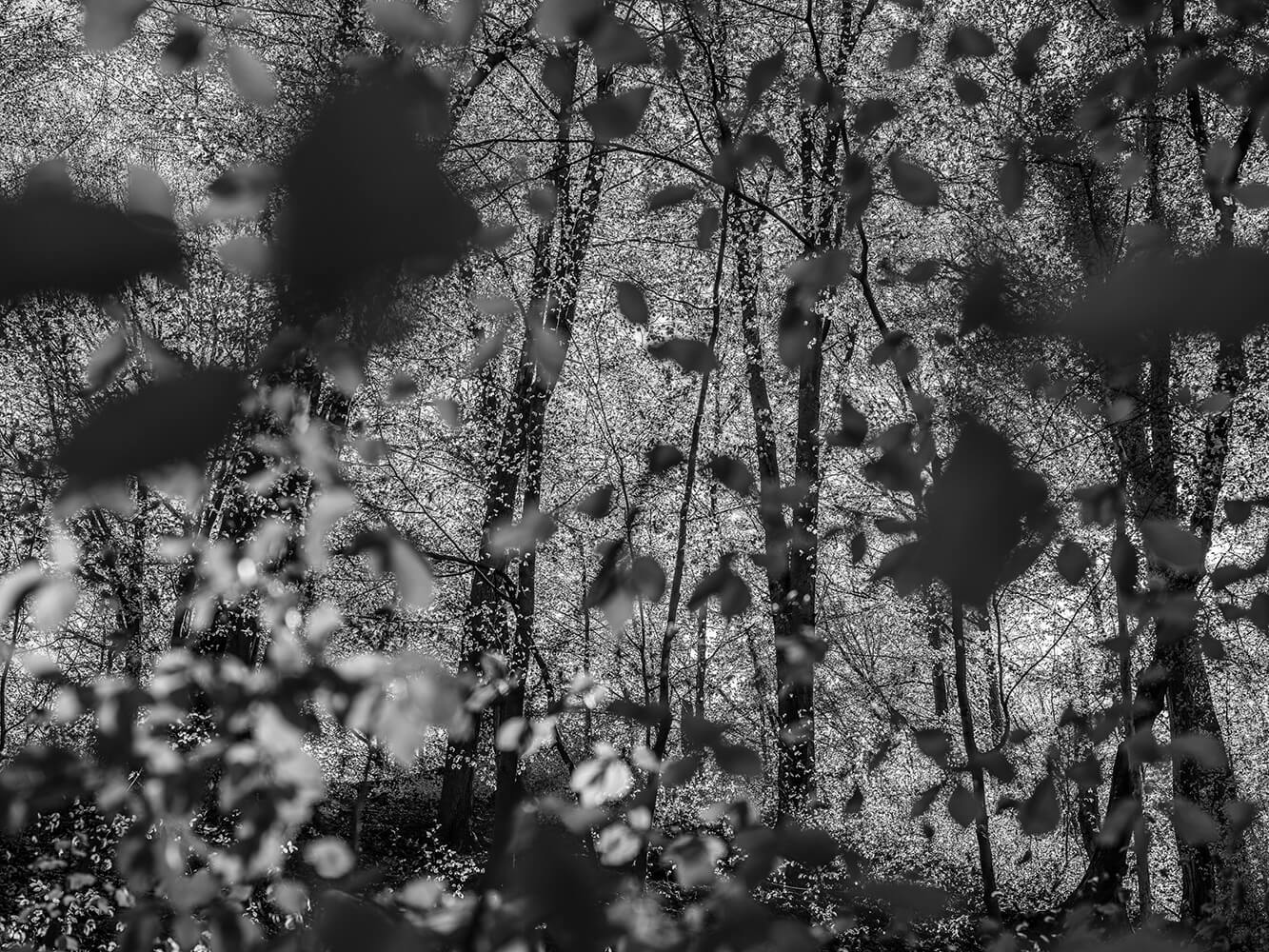
ALEŠ JUNGMANN
Boundaries between urban and wild are blurred by the photographer as they work through this concept of landscape in a monochrome perspective, and explore how we now occupy this natural space. They allow the detail of foliage, the shape of the trees and many forms of flowers to fill the scene, almost as reminders of all that has existed here until this point. This photographer carefully takes in the moment, pausing this land in transition and divulging their thoughts visually and verbally. – LIFE FRAMER
Photographer statement – I understand landscape photography as an exploration of an unknown space beyond my intimate and civilized experience. On the border of the city, modernity, technology and progress. The original space of the landscape, where perhaps the key to understanding events and relationships was once more easily accessible, is now lost and forgotten for good, the bond is broken, the senses weakened. I stand in the landscape, in awe, overwhelmed by a superfluous and unreadable mass of sensations and information. I’m trying for a reduction leading in a direction where I haven’t gone yet. Ordo ab chao. Gentle and careful clearing in the hope of getting closer.
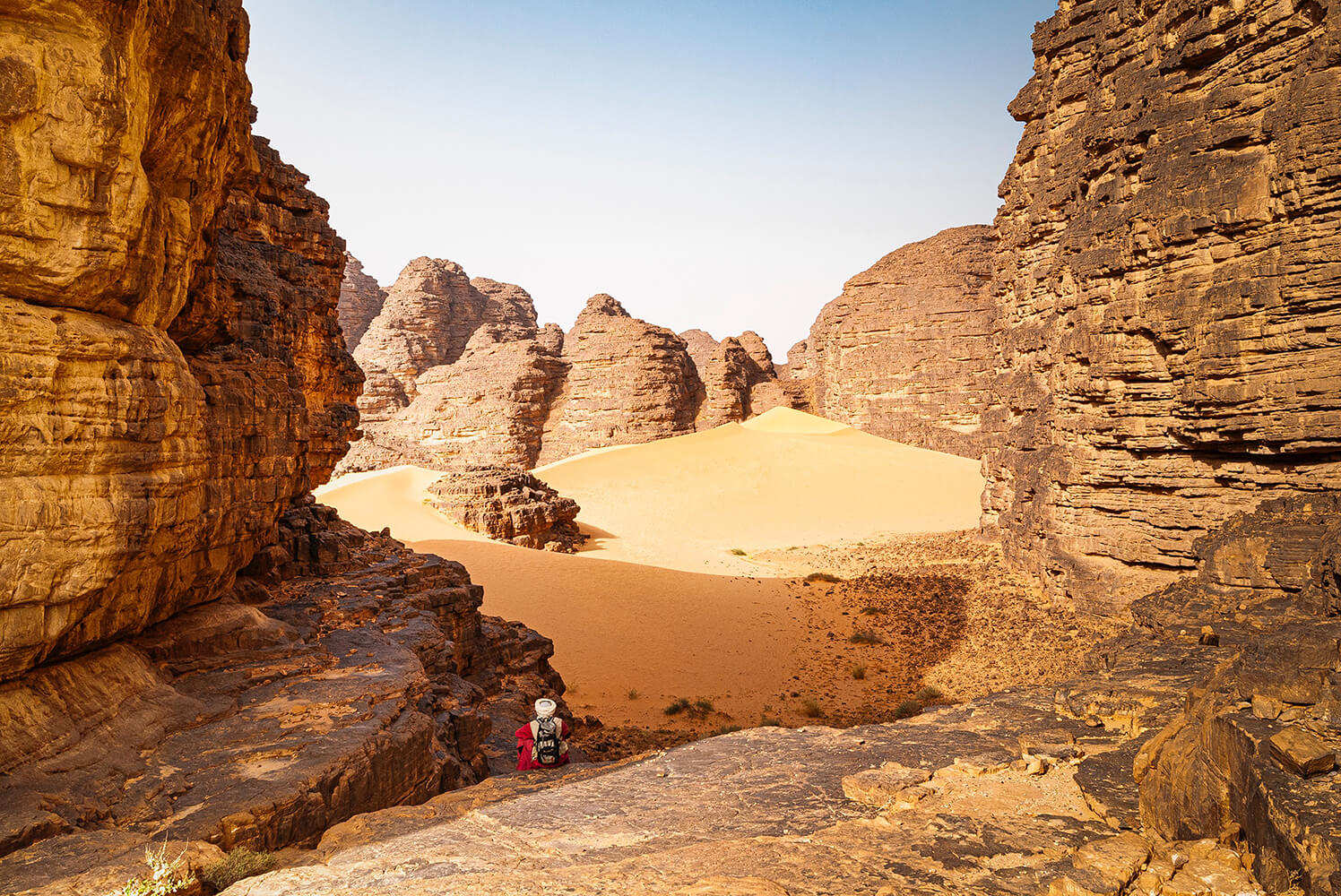
SERGE BÉGUET
This vast vista brings the viewer directly into another world, as these unusually shaped, natural rock formations slowly envelop the landscape. The solo subject appears both isolated and comfortable in their surroundings, absorbing the atmosphere and appreciating the moment. A picture perfect reminder of our superior natural environment, while simultaneously depicting our significance and insignificance within it. – LIFE FRAMER
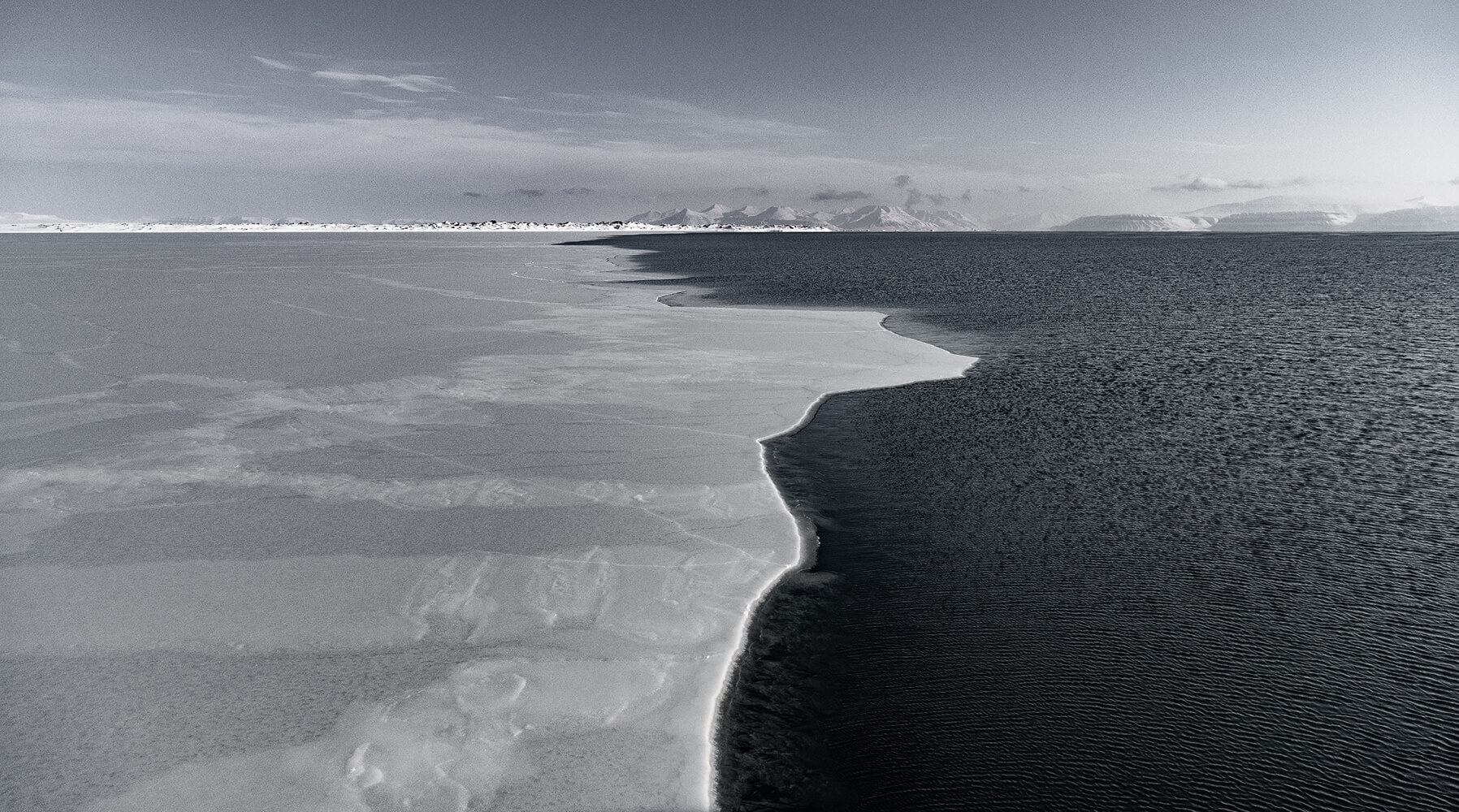
FLORENCE CHOUET
A magnificent icescape awaits the viewer, the shimmer of silver light creating an almost spiritualistic atmosphere across both sea and ice. The photographer perfectly balances the composition of dark and light, choosing to fill the majority of the image with simple natural form, while a small detail of mountains dot the background. It’s interesting to note how many photographers shared the view from the same boat, provoking us to wonder how each individual captured the scene, and what it means to experience this vast, arctic landscape. – LIFE FRAMER
Photographer statement – A magic place on Earth… Svalbard. On a small boat. 12 photographers. 2022.
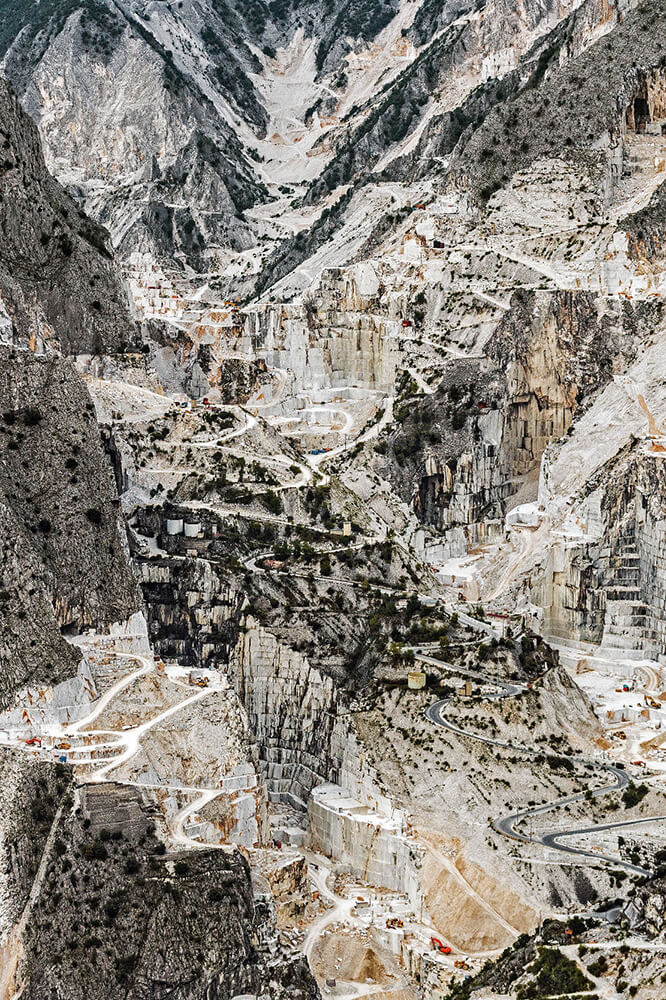
DANIEL REITER
The image is built like a classic painting, where minute stabs of grey, blue and yellow are carefully stacked on-top of one another, woven together within a vast white tapestry – so it may take a moment for the enormous scale of the quarry to come into perspective for the viewer. Carrara is notable for its marble that is exported worldwide, but seemingly at the extreme detriment of its own landscape and inhabitants as local air and waterways become increasingly polluted and its mined mountains contribute to devastating floods. A striking photograph of human greed in progress. – LIFE FRAMER
Photographer statement – Carrara, Tuscany, Italy.
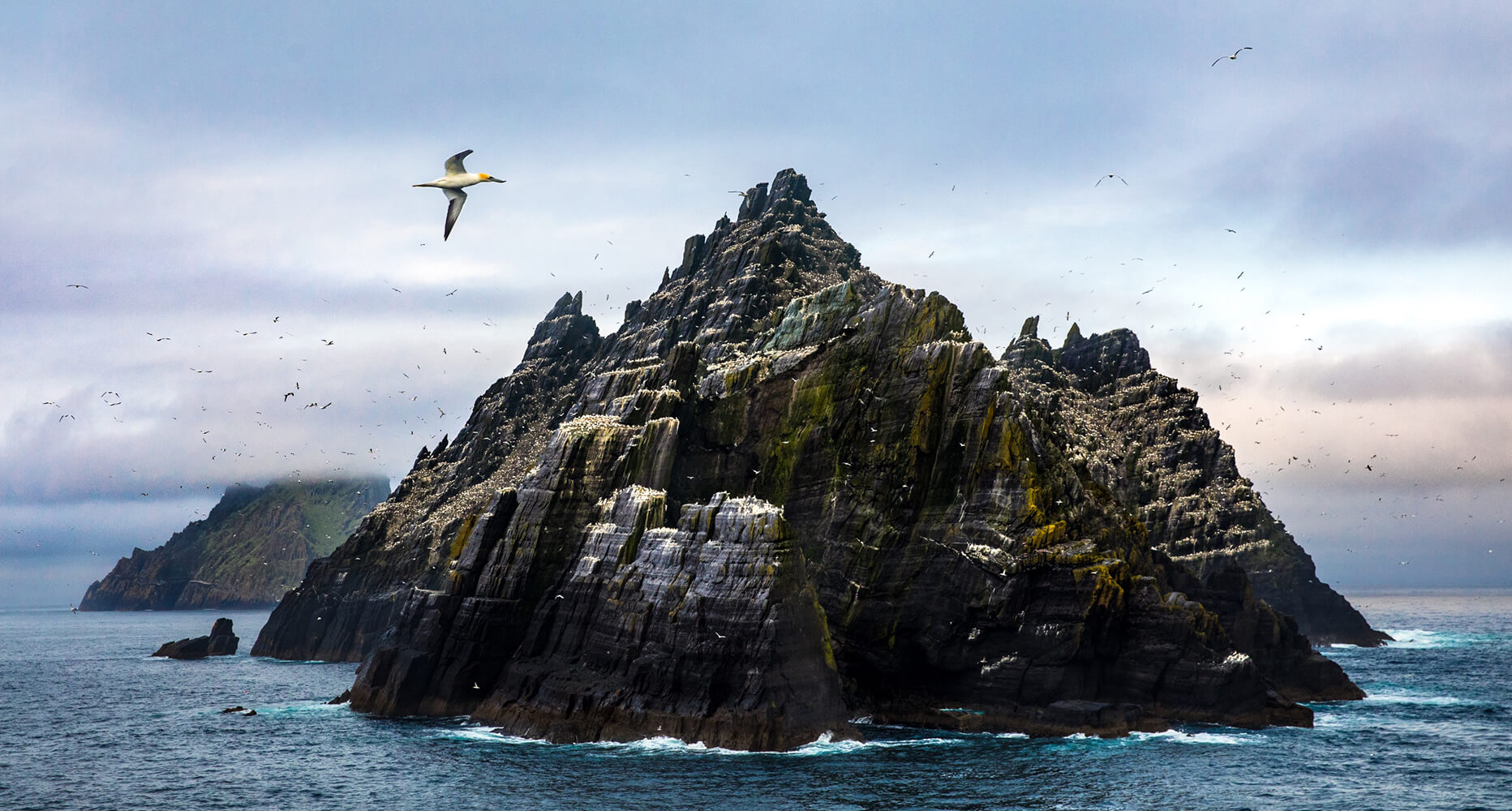
PIA HARBOURE
These striking, ancient islands are documented in many forms yet never cease to inspire amazement and admiration in the observer. The photographer enlightens the viewer on the significance of this giant rock that juts acutely out of the Atlantic Ocean, and its relevance to the sea birds that call it home. This is a breathtaking scene of these haunting and historic islands, with Little Skellig in the forefront proudly accommodating it’s 1000’s of inhabitants. – LIFE FRAMER
Photographer statement – Little Skellig Island is a dark rocky outcrop inhabited by Ireland’s largest bird: the Northern Gannet. Massive migration occurs between May and September making it the second largest Gannet Sanctuary in the world. It is nature preserved and uninhabitable to man. Skellig island, Ireland, May 20, 2023.
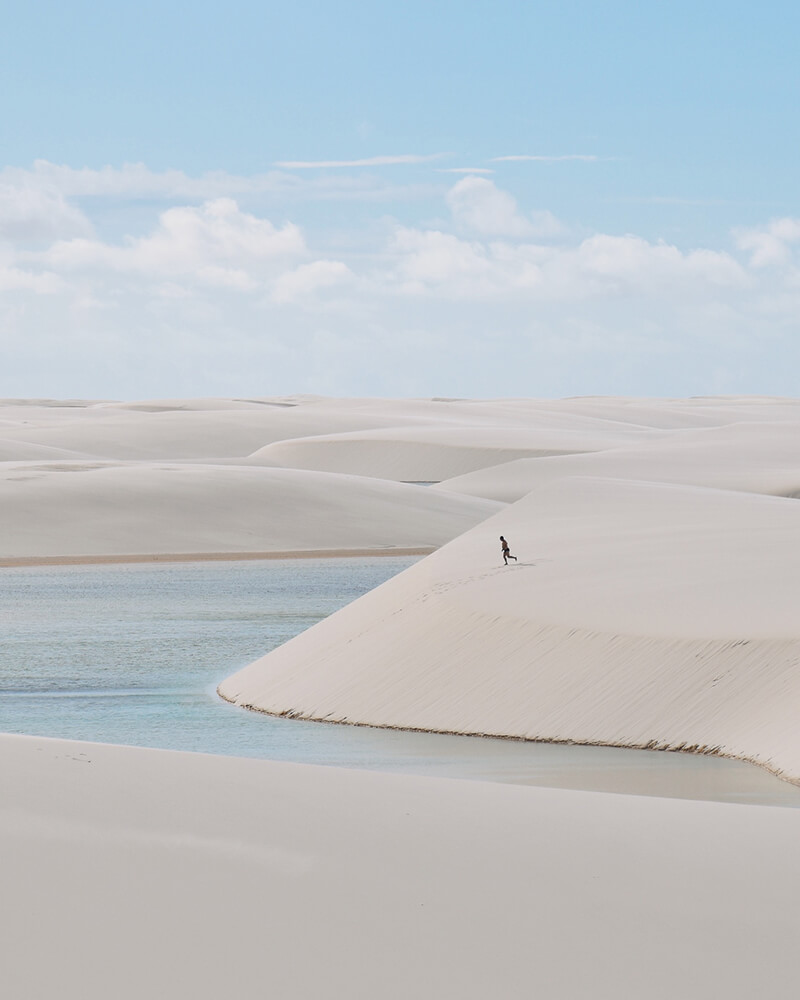
MATHILDE VEY
It’s not difficult to understand why one would want to immerse themselves in this paradise of white sand dunes, blue skies and crystal waters. A sense of freedom, rather than isolation, emanates from the solo subject as they run purposefully towards the inviting lagoon. This is a captivating image for the viewer, as the anonymity of the lone person further enables the viewer to imagine their own personal experience of this exciting sandscape. – LIFE FRAMER
Photographer statement – Travelers not only want to escape, they look for pure experience of freedom. That’s what makes Lençóis Maranhese National Park in Brasil one of the most unique destination of the world. Everyday day hundreds of tourists reach the dunes but each of them can find his own path in the immensity. A few minutes of walk and you suddenly let the view melt with your inner world. Loneliness gets soft and powerful. Wonder meets introspection.
